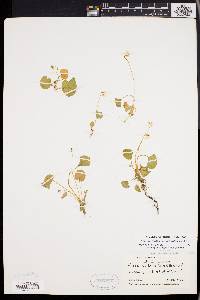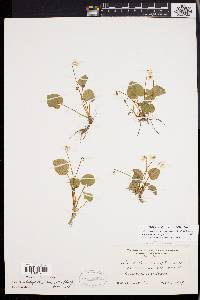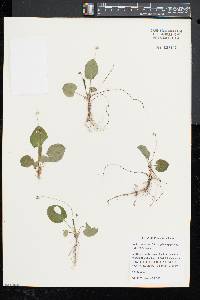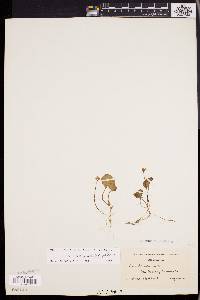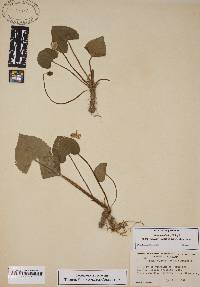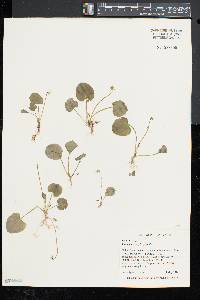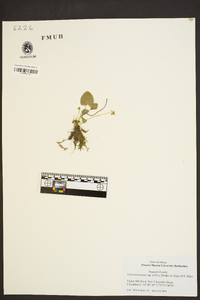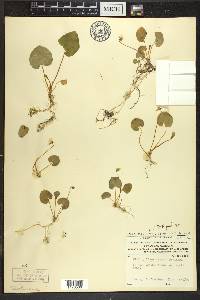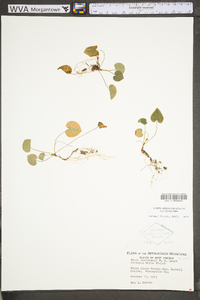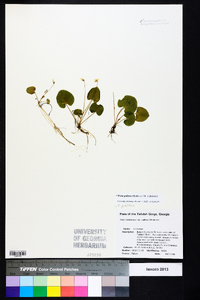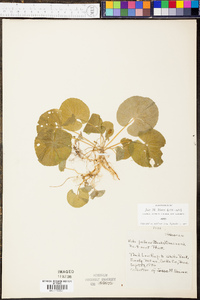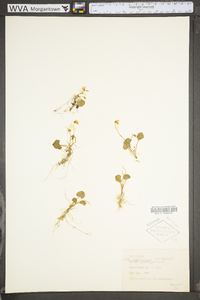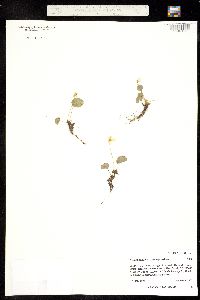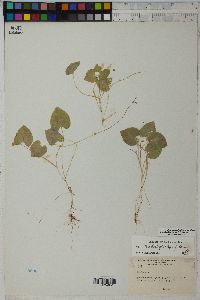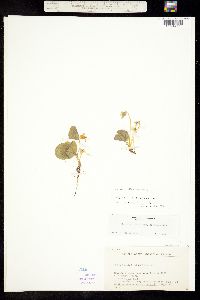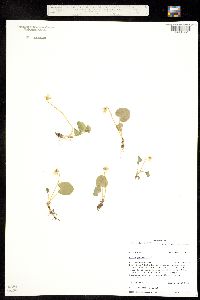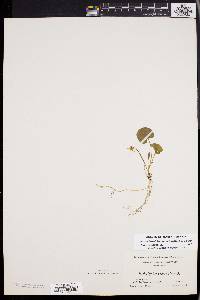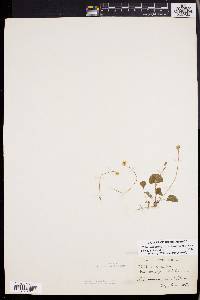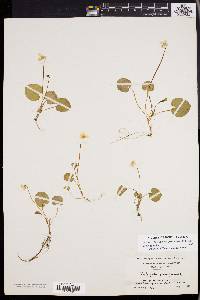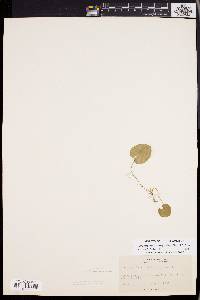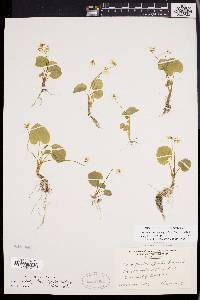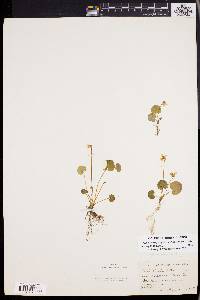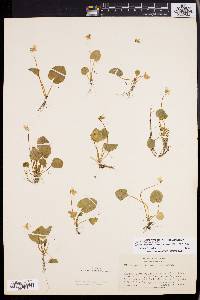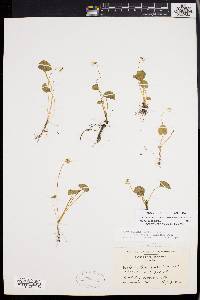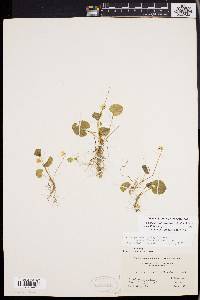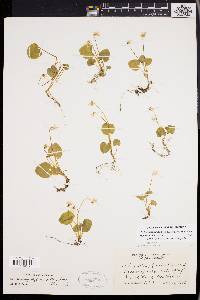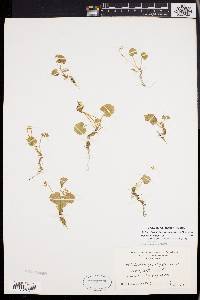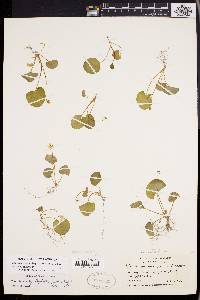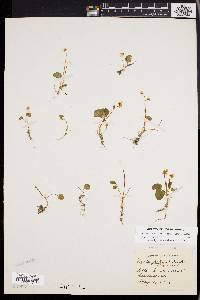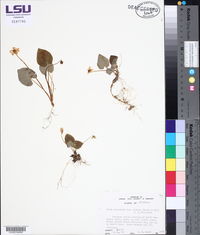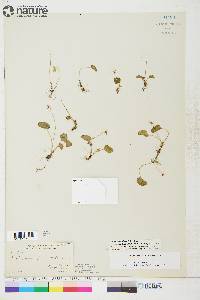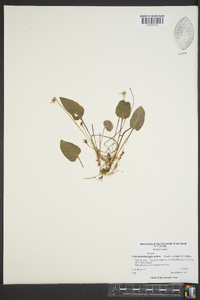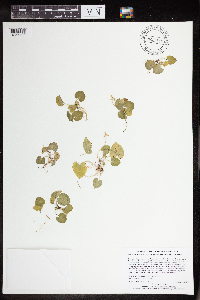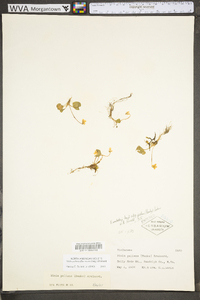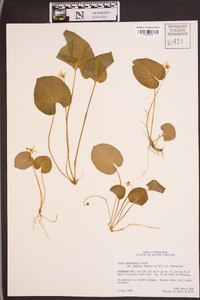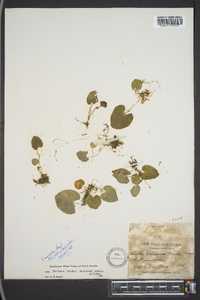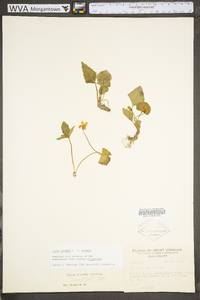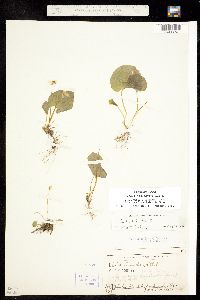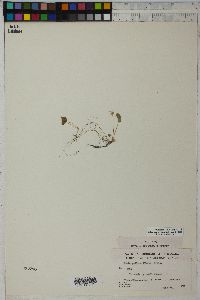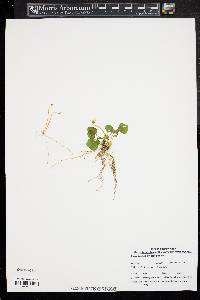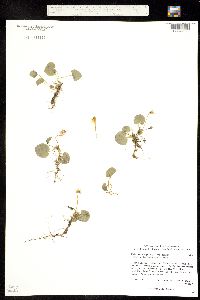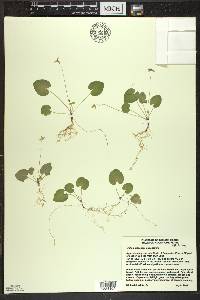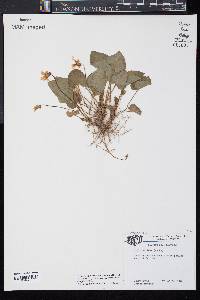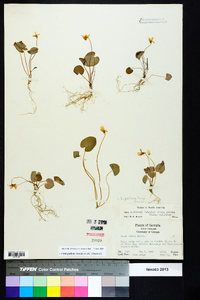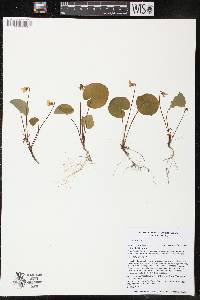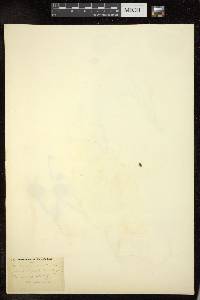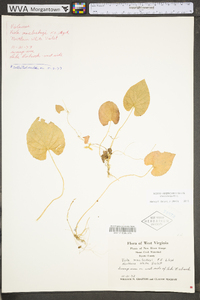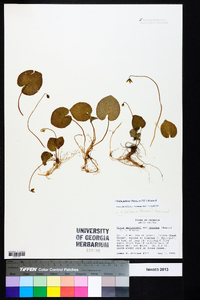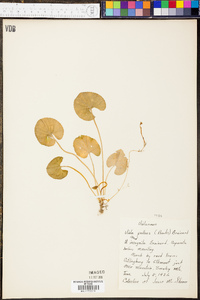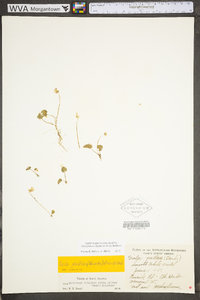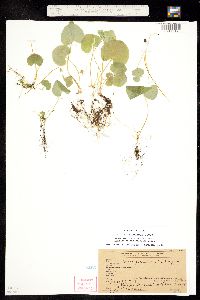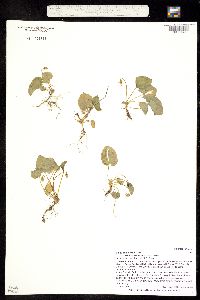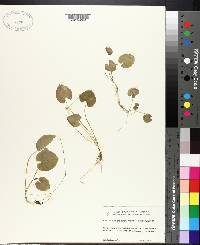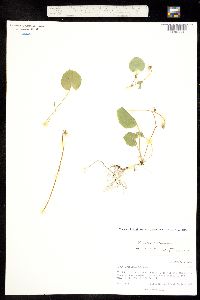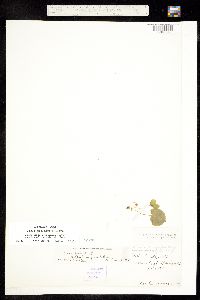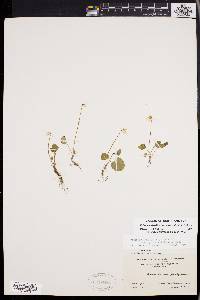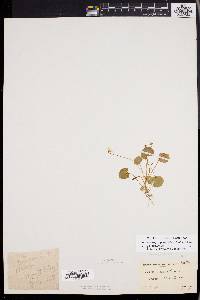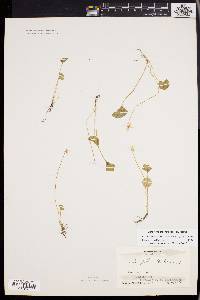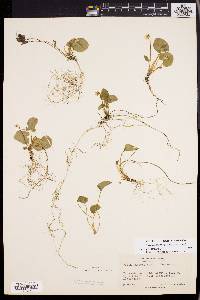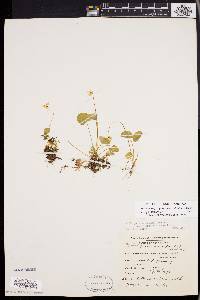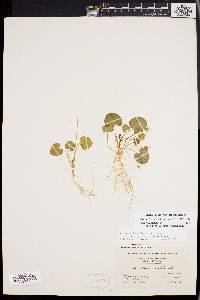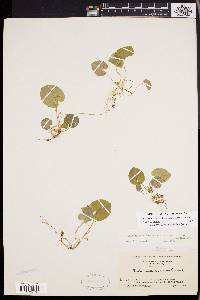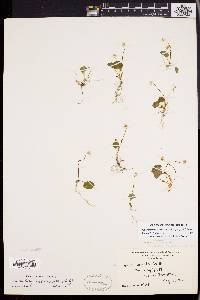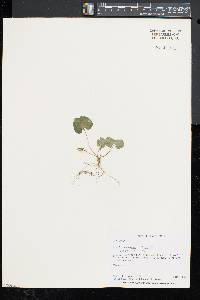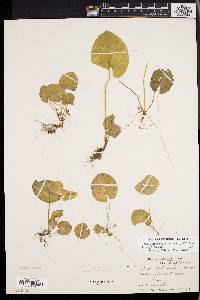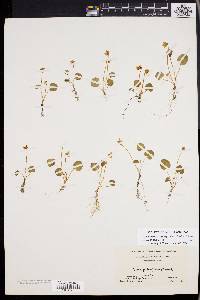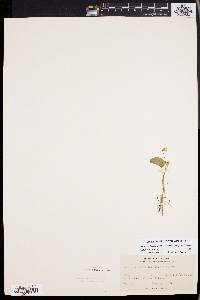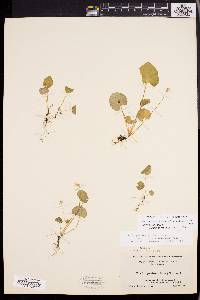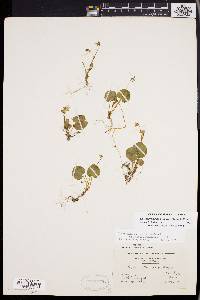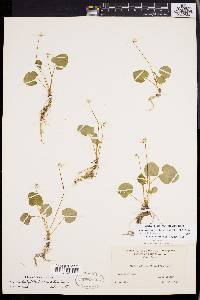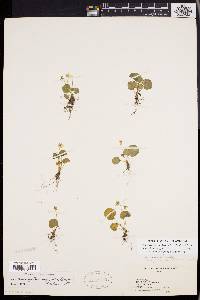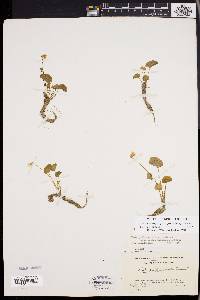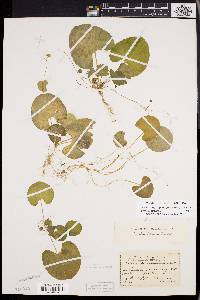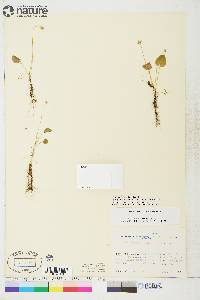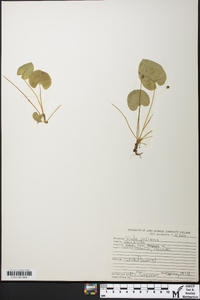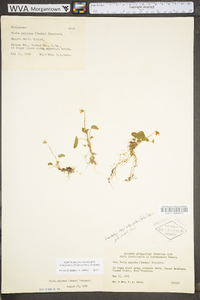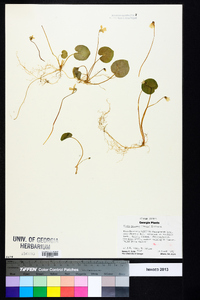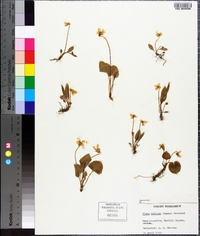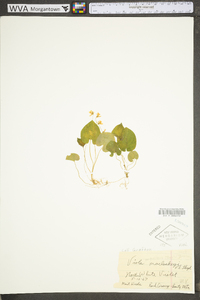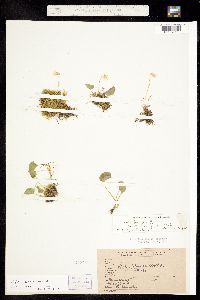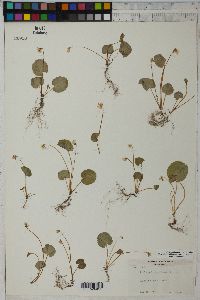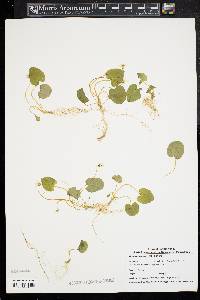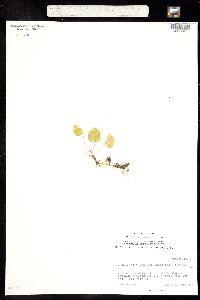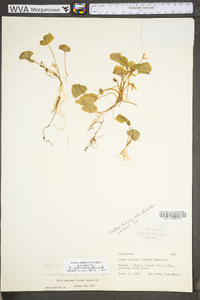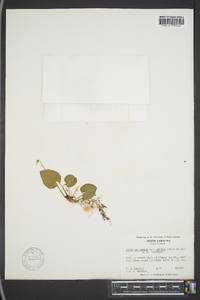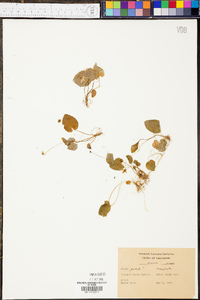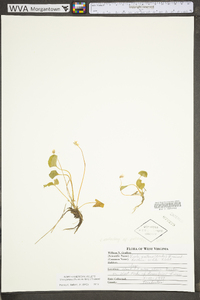
|
|
|
|
Family: Violaceae
|
Perennial herb 5 - 15 cm tall Leaves: basal, long-stalked, obscurely round-toothed or almost non-toothed, hairless, dull green (lower surface often orangish when dry), 1 - 8 cm long, 1 - 6 cm wide, broadly heart-shaped to kidney-shaped with mostly rounded or blunt tip. The leaf stalks are sometimes hairy, and the green stipules are usually more than 7 mm long. Flowers: long-stalked (same height or taller than leaves), white, often fragrant, 0.7 - 1 cm long, bilaterally symmetric with two upper petals, two lateral petals, and lower petal with base modified into a rounded nectar spur. In the summer, producing slender prostrate or erect stalks terminated by very fertile flowers that do not open (cleistogamous). Sepals: five, green, linear to lance-shaped with ear-like appendages (auricles) at the base. Petals: five, separate, all differently shaped, the lower three with brown-purple veins near base. The upper two petals are inversely egg-shaped, the two lateral petals sometimes have a few straight and spreading hairs near the base, while the hairless lowest petal is prolonged at its base into a short, rounded spur or sac. Stamens: five, separate, but very tightly arranged so anthers touch as they surround ovary. The filaments are very short, and the lower two stamens have spur-like nectaries on their backs that extend into the spur or sac of the lower petal. Pistil: with a single-chambered, superior ovary; and a single style that expands into a short, scoop-shaped stigma. Fruit: a many-seeded, green, hairless, 4 - 6 mm long, ellipsoid to egg-shaped capsule on long, erect stalks. The capsule opens lengthwise from its top to disperse the black seeds which have a large amount of oily endosperm, and often an appendage (aril). Stems: absent aboveground, leaves and flowers arising independently and directly from a rootstock of slender (under 3 mm diameter) rhizomes and spreading by pale, very slender, almost threadlike runners (stolons). Similar species: Viola macloskeyi ssp. pallens is similar to V. blanda and V. renifolia, but those taxa have sharp pointed teeth on the leaves, the lower leaf surfaces are distinctly paler and never orange, the leaves usually have some hairs on either surface (or the upper side hairless and shiny), plus the capsules are flecked with purple and held on reclining, arching, or prostrate stalks. Flowering: April to June Habitat and ecology: Not common, local in shaded boggy and marshy sites. Occurence in the Chicago region: native Notes: This plant was previously separated as a distinct species under the name V. pallens. The typical subspecies, V. macloskeyi ssp. macloskeyi, occurs primarily in California, with our subspecies being more widespread. This plant is often found closely associating with V. blanda and V. renifolia, and it can hybridize with both. Etymology: Viola is the classical name for the genus. Macloskeyii is named after George Macloskie (1834-1920), an Irish naturalist, educator, and author. Pallens derives from the Latin for "pale". Author: The Field Museum |


